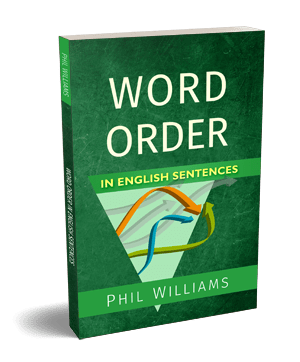
I’ve been mostly editing books lately, so a lot of my focus has been on little details of English in written work. A frequent topic for inconsistencies or complications is commas, hence I have produced a full group of articles about them on this site.
I was going to expand on some details about them again, but realised I have already covered most of the rules. Instead, I thought it might be useful to show some comma considerations in use, through an exercise. So today I’ve got a short exercise to help identify issues with commas in English.
What are the rules for commas?
There are lot of different ways that commas can be applied in English, which can be flexible or nuanced. The exercise below will test a variety of these. You can either study the rules first or have a go at the exercise and to learn from the answers. To revise the information I’ve shared before, have a look at these articles:
- How to Master Commas in Use (a summary of all the content)
- Using Commas with Adverbials
- Using Commas with Additional Information
- Using Commas to Separate Clauses
- Using Commas with Lists and the Serial Comma
Common Comma Rules and Mistakes Exercise
Consider the following ten sentences. Some include commas and some do not. Decide if each sentence is Acceptable, Requires Commas or is Incorrect. (Note I say Acceptable and not Correct because sometimes a comma may be optionable; they are not necessary right or wrong, but the question is if it works.)
- The girl who served me coffee, was very nice.
- Do you want ice cream, chocolate, biscuits, or cake?
- However, it got here I want that stain cleaned off.
- I want to go out but I don’t have any nice clothes.
- He jumped on the train, as it passed under the bridge.
- Jill travelled to Prague with Erin, her mother and her cousin.
- I ran up the stairs too fast, and tripped on the top step.
- She returned the food as there was a hair in it.
- “Oh, no!” he cried in surprise.
- If you want to go to the beach, don’t forget to bring a towel.
Answers
I’ve tried to explain my thinking in full below, to give a complete understanding of how I approach comma use. If you have any questions, or disagree, do feel free to comment below!
- The girl who served me coffee, was very nice. – Incorrect; “who served me coffee” is either defining (no commas) or non-defining and needs an extra comma ( “, who served me coffee,”)
- Do you want ice cream, chocolate, biscuits, or cake? – Acceptable; this is an example or a list with an Oxford/serial comma which is not strictly necessary but does not cause any confusion to include.
- However, it got here I want that stain cleaned off. – Incorrect; the comma should come at the end of the complete adverbial phrase, “However it got here,” (and we can tell it is an adverbial phrase and not a separate clause because there is no conjunction).
- I want to go out but I don’t have any nice clothes. – Acceptable; the sentence is short and easily understood, so a comma before “but” isn’t necessary.
- He jumped on the train, as it passed under the bridge. – Incorrect; the comma separates the “as” clause as additional/incidental information, shifting the meaning to “because”, whereas without a comma the sentence flows together with “as” meaning the clauses occur at the same time.
- Jill travelled to Prague with Erin, her mother and her cousin. – Incorrect; this may be unlikely to be misunderstood, but this is an example of where an Oxford/serial comma could avoid awkward confusion by clearly showing this is a list and not defining information (“Erin, her mother, and her cousin”). This doesn’t completely solve the problem, however, as we don’t know if the list is two or three people (reordering it so Erin is not first would solve this), but it is clearer with a comma than without!
- I ran up the stairs too fast, and tripped on the top step. – Acceptable; this isn’t incorrect, as the comma can be used here to slow down the sentence or give the second clause the feeling of an after-thought/sequential action. However, without a particular reason for it, I would advise removing this comma as the sentence is short and flows better without a comma.
- She returned the food as there was a hair in it. – Acceptable; a comma could separate the “as” clause as additional information, but is not required to clarify the sentence.
- “Oh, no!” he cried in surprise. – Incorrect; this is a complete phrasal expression, which shouldn’t be separated by a comma, unless deliberately showing hesitation. (Consider the difference in response to a question: “Oh, no, that’s not what I meant.”)
- If you want to go to the beach, don’t forget to bring a towel. – Acceptable; generally in conditional sentences when the “if” clause comes first, a comma between the clauses helps add clarity.








Dear Phil,
Thank you for your useful and valuable information.
It is good to know this information how to use the comma correct or incorrect.
Although it causes a lot of problems for learners who are not a native speakers.
Have a good day
A big thank you to you as always
You’re welcome and thank you for saying. It causes a lot of problems for native speakers too!